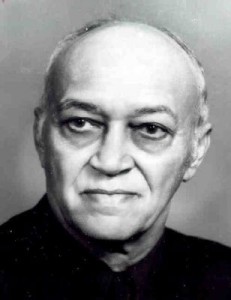How the Black Power Movement Influenced the Civil Rights Movement
With a focus on racial pride and self-determination, leaders of the Black Power movement argued that civil rights activism did not go far enough.
Image: Bettmann Archive/Getty Images
(History.com) By 1966, the civil rights movement had been gaining momentum for more than a decade, as thousands of African Americans embraced a strategy of nonviolent protest against racial segregation and demanded equal rights under the law.
But for an increasing number of African Americans, particularly young black men and women, that strategy did not go far enough. Protesting segregation, they believed, failed to adequately address the poverty and powerlessness that generations of systemic discrimination and racism had imposed on so many black Americans.
Inspired by the principles of racial pride, autonomy and self-determination expressed by Malcolm X (whose assassination in 1965 had brought even more attention to his ideas), as well as liberation movements in Africa, Asia and Latin America, the Black Power movement that flourished in the late 1960s and ‘70s argued that black Americans should focus on creating economic, social and political power of their own, rather than seek integration into white-dominated society. (more)
My Hometown: The Epic Love Story Behind one of Texas’ First Freedom Colonies
Phillip White traces his roots to the founders of Shankleville, a small town with a big history
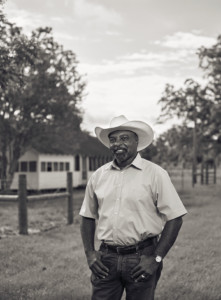 (Texas Highways Magazine) It’s easy to bypass Shankleville, an East Texas community with no business district or convenience store. But what it lacks in stature, Shankleville makes up for in heritage—a proud history that resident Phillip White calls an “enduring love story.”
(Texas Highways Magazine) It’s easy to bypass Shankleville, an East Texas community with no business district or convenience store. But what it lacks in stature, Shankleville makes up for in heritage—a proud history that resident Phillip White calls an “enduring love story.”
White traces his ancestry to the town’s founders, Jim and Winnie Shankle, an African American couple originally from Mississippi. When Winnie was sold to a Texas slave owner in the mid-1800s, Jim escaped and fled after her, swimming across the Mississippi River and traveling nearly 400 miles. The two reunited, and after emancipation, they settled this farming community of freed slaves.
Today, Shankleville numbers no more than 100 people, but it got a burst of national attention last year when Michael Strahan, the retired football star and TV personality, discovered his ties to the community in an episode of PBS’ “Finding Your Roots.” Sitting on the back porch of his family home, White, a Newton County commissioner, reflects on Jim and Winnie—his great-great-grandparents—and their legacy. (more)
Photo: Philip White at the homestead where his mother grew up. (Nathan Lindstrom Photography
©2019 Nathan Lindstrom)
A Mind-Opening Journey Through African Histories
Learning from the Director of the Smithsonian National Museum of African Art, Gus Casely-Hayford
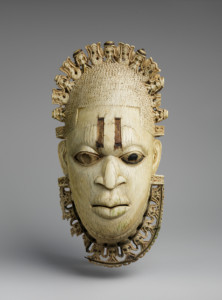 (The Getty Museum) “To learn history is something that has been systematically denied over generations,” said Gus Casely-Hayford during a recent visit to the Getty. The director of the Smithsonian Museum of African Art had come to give a talk about the growth of West Africa’s medieval empires and the powerful emperor of Mali, Mansa Musa.
(The Getty Museum) “To learn history is something that has been systematically denied over generations,” said Gus Casely-Hayford during a recent visit to the Getty. The director of the Smithsonian Museum of African Art had come to give a talk about the growth of West Africa’s medieval empires and the powerful emperor of Mali, Mansa Musa.
The theme underlying Casely-Hayford’s work has always been the urgent, contemporary need to unearth and understand the historical and cultural stories of Africa.
He organized Africa 05—the largest celebration of Africa in the U.K., with more than 1,000 exhibitions and events to highlight all of the dynamic regions. For London’s National Portrait Gallery in 2015, he developed an exhibition exploring Britain’s abolition of slavery. Also a broadcaster, he has presented from Tate Britain’s British Walks for Sky Arts, to two series of Lost Kingdoms of Africa for BBC, and even gave a TEDGlobal Talk on pre-colonial Africa.
Casely-Hayford is now returning to the U.K. to take on a role as the inaugural director at the V&A East, a brand-new museum and research center to open in 2023 at Stratford Waterfront.
Casely-Hayford reminds us to embrace history, to learn from the past, and that we can rewrite the narratives. “These aren’t just histories for Africans and people of African descent,” he said during the recent discussion, “they are all our histories.” (more)
Photo: Queen Mother Pendant Mask: Iyoba, 16th century, Edo peoples. Ivory, iron, copper. The Michael C. Rockefeller Memorial Collection, Gift of Nelson A. Rockefeller, 1972. 1978.412.323. Source: http://metmuseum.org/.
TIPHC Bookshelf
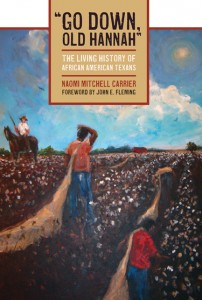 Published scholarship on black history in Texas is growing and we’d like to share with you some suggested readings, both current and past, from some of the preeminent history scholars in Texas and beyond. We invite you to take a look at our bookshelf page – including a featured selection – and check back as the list grows. A different selection will be featured each week. We welcome suggestions and reviews. This week, we offer, “Go Down, Old Hannah,” The Living History of African American Texans, by Naomi Mitchell Carrier.
Published scholarship on black history in Texas is growing and we’d like to share with you some suggested readings, both current and past, from some of the preeminent history scholars in Texas and beyond. We invite you to take a look at our bookshelf page – including a featured selection – and check back as the list grows. A different selection will be featured each week. We welcome suggestions and reviews. This week, we offer, “Go Down, Old Hannah,” The Living History of African American Texans, by Naomi Mitchell Carrier.
Living history is a style of instructive and entertaining performance that seeks to bring history to life with the use of costumes, tools, and reenactments appropriate to a specific time period. Done well, living history performances illuminate human experience in powerful, unforgettable ways.
The fifteen living history plays in this collection were commissioned by museums and historic sites in Texas to show the interdependence of African American experiences and contributions to the living history of Texas. The plays cover subject matter ranging from slave celebrations, family breakups, and running away, to the Civil War, emancipation, and Reconstruction. Each play is research based and performed by Talking Back Living History Theatre as a festival production. These scripts are easily performed, and author Naomi Mitchell Carrier has included production notes in the overviews that precede each play. Lesson plans are also included, which add to the collection’s appeal as a classroom tool.
Carrier’s talent for bringing historical figures to life is exceptional. The names of most primary characters in these plays are real. By giving them faces, feelings, intelligence, and dignity, Carrier aims to give them new life.
This Week in Texas Black History
Mar. 22
The first black state convention met in Austin on this day in 1866. The event, organized by the Texas State Central Committee of Colored Men, focused on the concerns – economic, political, civil rights – of black Texans. Rev. Jacob Fontaine presided over the meeting. Several similar conventions were held in the following years, the last in Houston in 1895, and some delegates were sent to national conventions to express those concerns.
Mar. 23
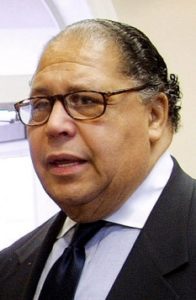
Former Atlanta (Ga.) mayor Maynard Jackson was born on this date in 1938 in Dallas. Jackson and his family moved to Atlanta when he was seven years old. He earned a political science degree from Morehouse College in 1956, then a law degree from North Carolina Central in 1964. Jackson was Atlanta’s first black mayor, serving from 1973-1981 and 1989-1993 and was the first African American to serve as chief executive of any major Southern city. One of his major achievements was the expansion of Hartsfield Atlanta International Airport into a major transportation hub, “ahead of schedule and under budget.” (It was renamed Hartsfield-Jackson Atlanta International Airport after his death in 2003.) He reformed the police force and worked to maintain calm when the city was terrorized by a string of child murders. After his reelection in 1977, he was barred from a third consecutive term and supported the successful candidacy of Andrew Young. In his third bid for the mayoralty, he was swept into office with nearly 80 percent of the vote. He counted among his triumphs the securing of Atlanta as the site of the 1996 Olympic Summer Games.
Mar. 24
On this date in 1896, folklorist J. Mason Brewer was born in Goliad. Brewer, considered the premier African-American folklorist of the twentieth century became the first author and speaker to use black American dialect extensively in front of and to all audiences, particularly when dealing with folklore. Brewer attended black public schools in Austin and in 1917 received a B.A. from Wiley College in Marshall. In 1926, he was a professor at Samuel Huston (now Huston-Tillotson) College in Austin when he met University of Texas professor J. Frank Dobie who influenced Brewer to turn from publishing his own poetry to collecting and publishing black folklore. He was the first black member of both the Texas Folklore Society and the Texas Institute of Letters. Brewer’s most noted works include “Aunt Dicy Tales,” and an anthology, “American Negro Folklore,” for which he won the Chicago Book Fair Award in 1968.
Mar. 28
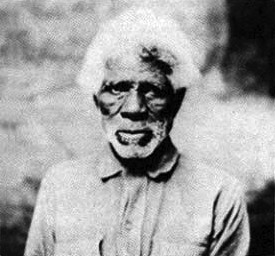
This day marks the death of Congressional Medal of Honor recipient Pompey Factor in 1928 near Brackettville. Factor was a black Seminole and a former slave who served as a U.S. Army scout working with the 24th Infantry, a Buffalo Soldier regiment. He received the MOH for his actions on April 25, 1875 at Eagle’s Nest Crossing near present-day Langtry, Texas when he helped rescue unit commander Lieutenant John L. Bullis, who was under heavy fire and nearly surrounded in a skirmish with Comanche Indians.
Blog: Ron Goodwin, Ph.D., author, PVAMU history professor
Ron Goodwin is an assistant professor of history at Prairie View A&M University. Even though he was a military “brat,” he still considers San Antonio home. Like his father and brother, Ron joined the U.S. Air Force and while enlisted received his undergraduate degree from Texas Lutheran University in Seguin, Texas. After his honorable discharge, he completed graduate degrees from Texas Southern University. Goodwin’s book, Blacks in Houston, is a pictorial history of Houston’s black community. His most recent book, Remembering the Days of Sorrow, examines the institution of slavery in Texas from the perspective of the New Deal’s Slave Narratives.
Recent Posts
For every beginning there’s an end
To live is to die. Every beginning has an end. That’s not a very pleasant way to begin, but as Believers we are on a journey that ends with the grave. As a child I watched my mother deal with her mother as she entered the last chapters of her life. I didn’t fully understand what was going on, but I remember my mother assisting my grandmother to her various appointments. As life would…(more)
Lessons from Saturday Morning
One of my fondest memories from childhood is Saturday morning cartoons. That was the only time of the week I gladly woke up at 7 a.m. I remember rushing in my pajamas to that big(?) 19” TV to watch Bugs Bunny and Super Friends. Sometimes my mother would sit with me. But I remember not really wanting her watching cartoons with me. Its not that I didn’t enjoy my mother’s company, because I did. (more)
Submissions wanted
Historians, scholars, students, lend us your…writings. Help us produce the most comprehensive documentation ever undertaken for the African American experience in Texas. We encourage you to contribute items about people, places, events, issues, politics/legislation, sports, entertainment, religion, etc., as general entries or essays. Our documentation is wide-ranging and diverse, and you may research and write about the subject of your interest or, to start, please consult our list of suggested biographical entries and see submission guidelines. However, all topics must be approved by TIPHC editors before beginning your research/writing.
We welcome your questions or comments. Please contact Michael Hurd, Director of TIPHC, at mdhurd@pvamu.edu.

